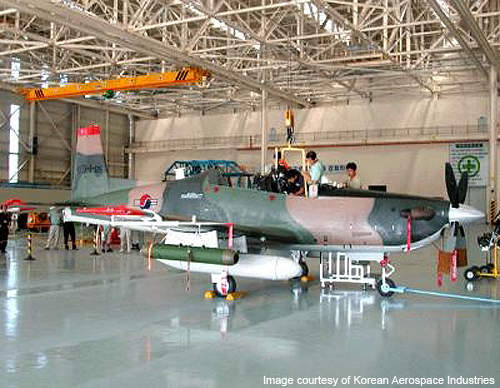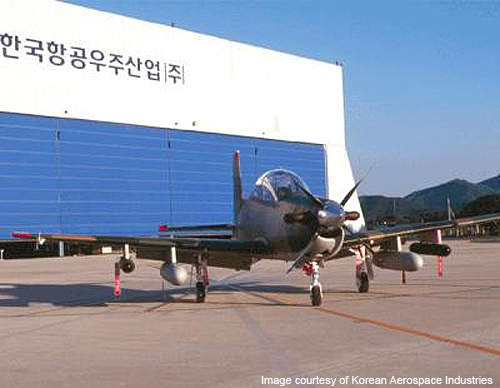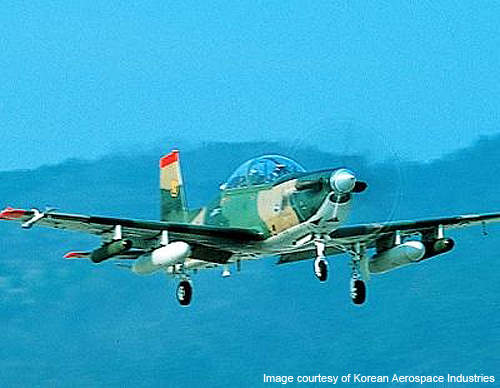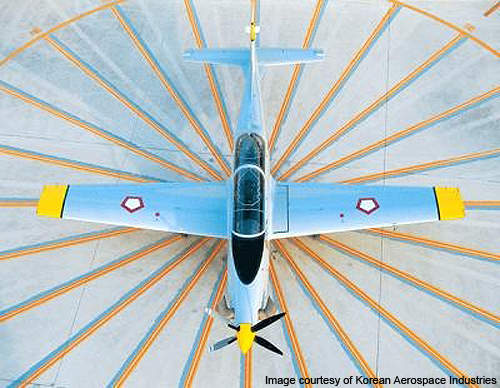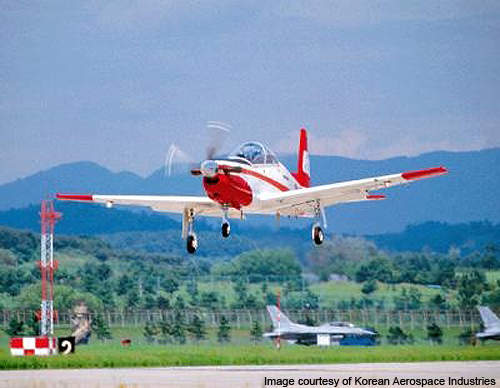KT-1 is a single engine basic trainer or light attack aircraft designed and built jointly by Korean Aerospace Industries (KAI) and the Agency of Defence Development (ADD).
It is the first native aircraft developed principally to meet the requirements of the Republic of Korean Air Force. About 92 KT-1 aircraft are currently operational worldwide.
KT-1 training aircraft variants
The KT-1 is available in five variants, KTX-1 Yeo-Myung, KA-1, KT-1B, KT-1C and KT-1T.
KTX-1 Yeo-Myung is the first prototype built by KAI. Various engines have been incorporated in the aircraft for flight testing. About six aircraft have been built to date.
KA-1 is an armed version of the original KT-1 aircraft. The variant features training, light attack and forward air control capabilities.
It also features five hard points of which two are located under each wing and one under the fuselage. The hard points can accommodate rocket launchers, gun pods and AIM-9 sidewinder missiles.
KT-1B is an export version of the KT-1 and is fitted with light arms for executing combat missions.
The KT-1C is a modified and combat model, which can be fitted with a 12.7mm gun pod, chaffs, flares, training missiles, rockets or unguided bombs.
KT-1T is an advanced version planned for delivery to the Turkish Air Force to meet their basic training demands.
Orders and deliveries
The Republic of Korea placed an order with KAI for 85 KT-1 (+15 optional) aircraft in 1999. The first aircraft was delivered in 2000 and the remaining deliveries were completed in 2002.
KAI delivered seven KT-1B aircraft as well as spare parts to the Indonesian Air Force in April 2003 as part of a $60m contract. Five more aircraft were delivered in May 2005. KAI sold 17 KT-1Bs to Indonesia between 2001 and 2008. It is planning to deliver more than 150 improved KT-1 aircraft worth $500m to various countries of Central America and Southeast Asia.
A $500m contract was signed between KAI and Turkish Aerospace Industries (TAI) in July 2007 for supply of 55 KT-1T trainers. The first five aircraft are being built at KAI’s plant in Korea and the remaining number at TAI’s plant near Ankara. Deliveries began in the fourth quarter of 2010 and will continue until 2014.
In the first quarter of 2010, India and South Korea have made a deal to form a joint committee to provide 60 KT-1s to the Indian Air Force for training.
KTX programme
The development of the KT-1 began under the KTX programme in 1988 for the Republic of Korea Air Force. The aircraft was manufactured using CATIA (computer aided three dimensional interactive application).
About nine prototypes were manufactured in June 1991. KT-1, which completed its maiden flight in November 1991, was assigned the codename "Woongbee" in 1995. The final test flight of the aircraft was completed in 1998. The aircraft was introduced in 2000.
Cockpit
KT-1 features a glass cockpit with tandem seating for two crew members (student pilot and instructor). The cockpit has been designed to allow basic training in air manoeuvring, flight instruments, formation flying and night flights.
It is also furnished with head up display (HUD), up front control panel (UFCP), multifunction displays (MFD) and an FV-4000 open architecture mission computer.
CMC Electronics is the prime contractor involved in the development of the avionics system for KT-1 trainers.
Pratt & Whitney Canada PT6A-62 turboprop engine
The KT-1 is powered by a single Pratt & Whitney Canada PT6A-62 turboprop engine, which can produce 950hp (708kW) of output power.
The engine is also fitted with a Hartzell four blade aluminium propeller. The propeller can rotate at a constant speed of 2000rpm.
An epicyclic speed reduction gearbox integrated in the engine decreases propeller noise by optimising output speed.
The engine is also fitted with a multi-stage axial and single-stage centrifugal compressor, a reverse flow combustor and a single-stage compressor turbine.
The length and diameter of the engine are 1.79m and 0.48m respectively.
Performance
KT-1 can climb at a rate of 1,067m/min. The maximum and cruise speeds of the aircraft are 648km/h and 500km/h respectively. The stall speed is 130km/h.
The range of the KT-1 is 1,688km, while the service ceiling is 11,580m. The aircraft can loiter in air for up to five hours. It weighs around 1,910kg while its maximum take-off weight is 3,311kg.

